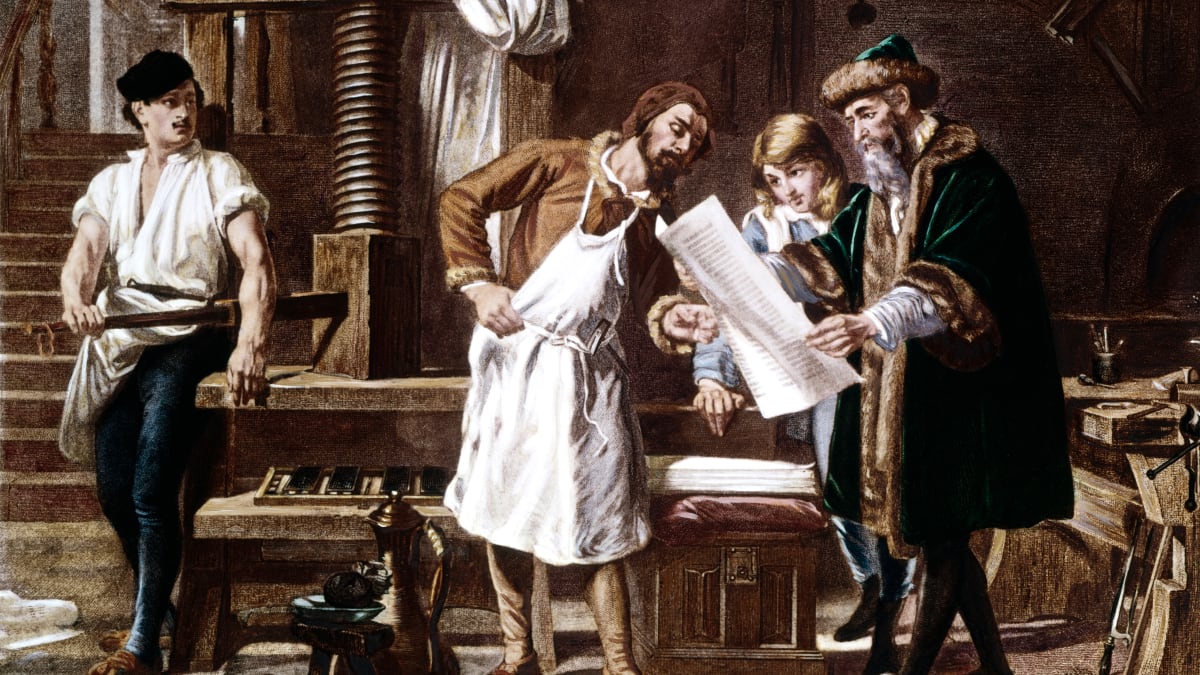The communications revolution brought on by the printing press, the enormous significance of the book as a force for change, the simple fact that printing preceded the Protestant revolt on which the Reformation fed are all aspects of a profound shift in perspective that, perhaps more than any other change, defines the transition between medieval and modern.
Humanity began to secularize, to particularize, to conceive of knowledge as growth rather than as discovery. Scientific inquiries were made widely known and were thus liberated from the scribes of the monasteries and the libraries of the very rich, by the dramatic shift from script to print.
Those historians who most emphasize the significance of technology in promoting human change, and who see the development of print as perhaps the most sweeping technological revolution between the wheel and the steam engine, also argue that there was essentially two stages to the Renaissance: the earlier, which preceded the printing press, and the later, which accompanied the spread of print.
The Renaissance clearly did have two phases, the difference between the two being a matter of degree. Printing was the revolutionary event that made possible the diffusion of scientific knowledge. turned science into a revolutionary force, and closed the gap between the practice of artisans and the theories of scholars.
The introduction of print slowly filtered down to the peasants. Perhaps as many as 10 percent could sign their names, but some learned their letters and how to keep accounts from printed materials, and a few sons of laborers found their way to a university. More important was the change brought about by print in the custom of the veillee—the gathering of villagers together two or three nights each week, or farm families telling each other stories about ghosts or werewolves, such gatherings eventually turning into dances or an interchange of gossip, that is, of news.
To the evening gathering was added, in the sixteenth century, the practice of listening to traditional storytellers who enriched their repertoire by referring to a few books. In time someone—often the rural schoolteacher—would use the veillee for reading aloud to the village. Aesop’s Fables, the Romance of the Rose, or the vernacular Bible were thus read. The Shepherds’ Calendar, full of practical agricultural advice illustrated by woodcuts, was also read aloud.

